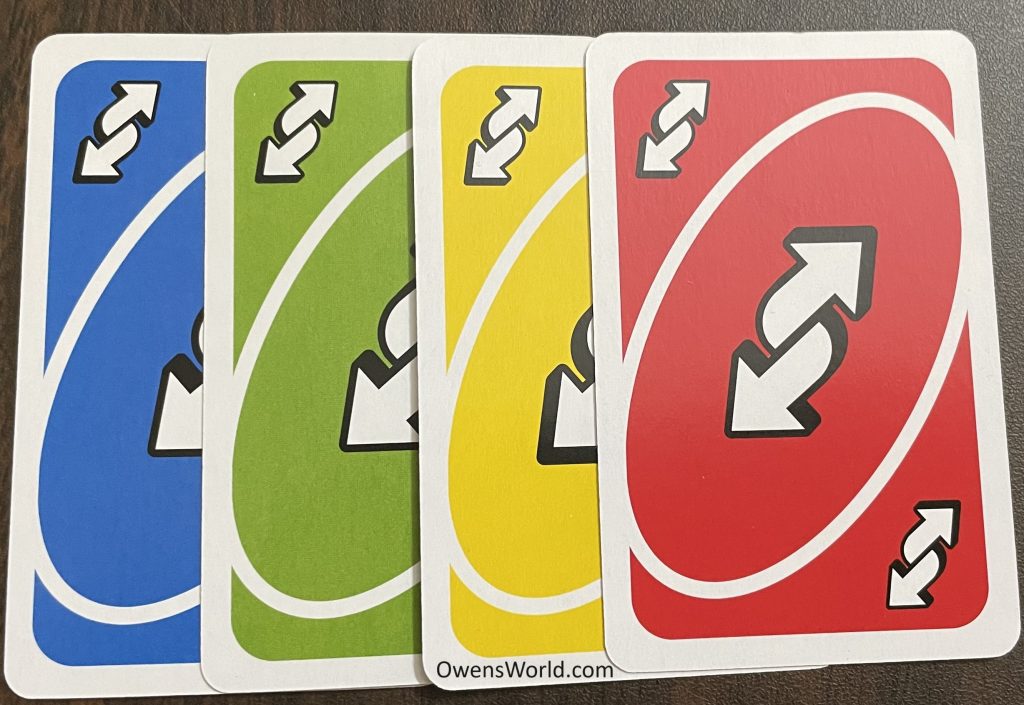Uno Reverse Card Rules for 2 Players
Uno is a popular card game that is played and enjoyed by millions around the world. The game rules are simple and straightforward, but they become particularly interesting when it comes to the Reverse card, especially when there are only two players. The dynamics of the Reverse card can change significantly depending on the number of players in the game, making it a crucial card in strategic gameplay.

Official Rules
When the game involves only two players, the Reverse card operates a bit differently. Since there are only two directions the game can take (either you play or your opponent plays), the Reverse card effectively acts as a Skip card. In other words, when one player lays down a Reverse card, it essentially means they get another turn, and the opponent loses their turn. This tactical nuance allows players to potentially chain their cards more efficiently or save themselves from drawing cards, adding an extra layer of strategy to 2-player Uno games.
In a standard Uno game with three or more players, the Reverse card serves to change the direction of play. For instance, if play was moving clockwise around a table and someone puts down a Reverse card, play would then move counterclockwise. This can be used strategically to either avoid or target a specific player with cards. It becomes a means to disrupt the rhythm of play and gives players an opportunity to change their fates, especially if they see a particular player preparing to unleash a series of undesirable cards.
Alternate Rules
Like many card games, Uno has spawned various house rules and regional variations. When it comes to the Reverse card in a 2-player game, some alternate rules have emerged over the years to keep the gameplay intriguing:
- Double Turn: Instead of treating the Reverse card like a Skip, some players choose to grant the person playing the Reverse card two turns back-to-back. This is slightly different from the official rule, as the player must play a valid card in their second turn rather than any card of their choice.
- Force Play: Another variation forces the player who plays the Reverse card to play another card immediately after it. If they can’t, they must draw a card.
- Null Card: Some players decide that the Reverse card has no special function in a 2-player game, treating it like a regular numbered card. This removes the strategic element of the Reverse card from 2-player games, but it can be a good option for those seeking a more straightforward game.
Stacking Reverse Cards
Playing multiple Reverse cards consecutively is a situation that occasionally arises in Uno games, and its handling can vary:
- Official Stance: According to the traditional rules, players are allowed to play one card at a time. This means you cannot stack Reverse cards in official games. If one player places a Reverse card, the next player (or the same player in a 2-player game) can play another Reverse card during their turn, but not simultaneously.
- House Rules: In many casual settings, players have adopted a house rule that allows stacking of special cards, including Reverse cards. In a 2-player setting, playing two Reverse cards in a row would mean that the player gets another turn for each reverse card, essentially getting three turns in a row.
In conclusion, the Uno Reverse card adds a delightful twist to the game, especially in 2-player scenarios. The card’s tactical uses, combined with the variety of alternate rules that can be applied, ensure that Uno remains an evergreen game, always keeping players on their toes. Whether you’re playing by official rules or spicing things up with your own variations, the Reverse card guarantees a dynamic and entertaining game experience.